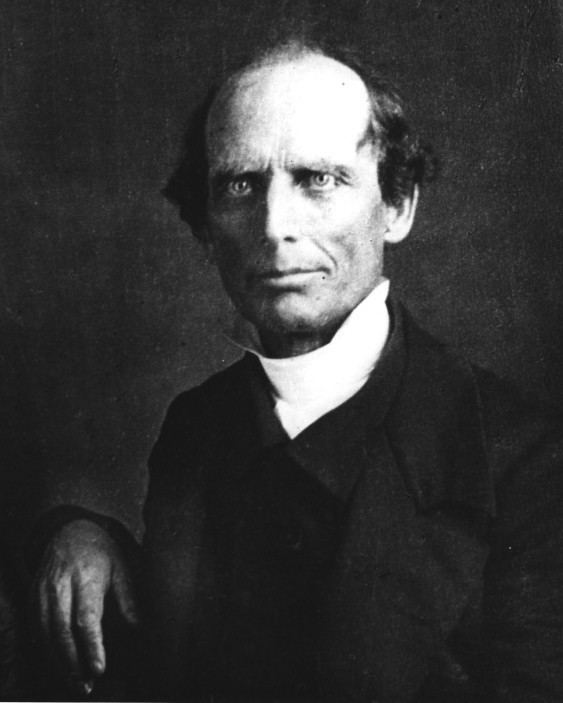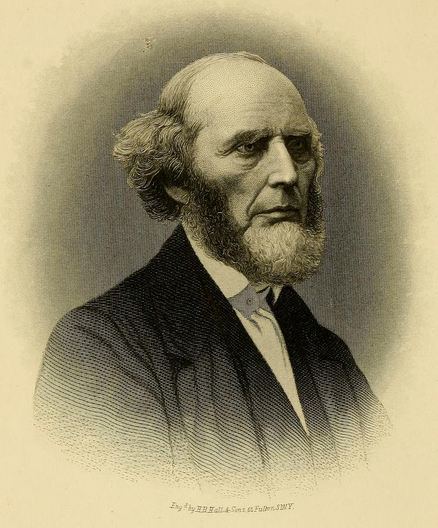Spouse Lydia Root (m. 1824) Role Minister | Name Charles Finney Education Yale University | |
 | ||
Born August 29, 1792Warren, Connecticut, U.S. ( 1792-08-29 ) Parents Sylvester Finney, Rebecca Finney Books Power from on High, Lectures on revivals of religion, Autobiography of Charles G Finney, Finney's systematic theology, Lectures on Revival Similar People Lyman Beecher, George Whitefield, Joseph Smith, Dorothea Dix, William Lloyd Garrison | ||
Beware of false prophets charles grandison finney phony revivalist arch heretic
Charles Grandison Finney (August 29, 1792 – August 16, 1875) was an American Presbyterian minister and leader in the Second Great Awakening in the United States. He has been called The Father of Modern Revivalism. Finney was best known as an innovative revivalist during the period 1825–1835 in upstate New York and Manhattan, an opponent of Old School Presbyterian theology, an advocate of Christian perfectionism, and a religious writer.
Contents
- Beware of false prophets charles grandison finney phony revivalist arch heretic
- Charles Finney Power of Prayer Missionary stories in Tamil
- Early life
- Revivals
- Antislavery work and Oberlin College presidency
- Personal life
- Theology
- In popular culture
- References

Together with several other evangelical leaders, his religious views led him to promote social reforms, such as abolition of slavery and equal education for women and African Americans. From 1835 he taught at Oberlin College of Ohio, which accepted all genders and races. He served as its second president from 1851 to 1866, during which its faculty and students were activists for abolition, the Underground Railroad, and universal education.

Charles Finney | Power of Prayer | Missionary stories in Tamil
Early life
Born in Warren, Connecticut in 1792, Finney was the youngest of nine children. The son of farmers who moved to the upstate frontier of Jefferson County, New York after the American Revolutionary War, Finney never attended college. His leadership abilities, musical skill, six-foot three-inch stature, and piercing eyes gained him recognition in his community. He and his family attended the Baptist church in Henderson, New York, where the preacher led emotional, revival-style meetings. Both the Baptists and Methodists displayed fervor through the early nineteenth century. He "read the law", studying as an apprentice to become a lawyer, but after a dramatic conversion experience and baptism into the Holy Spirit in Adams, he gave up legal practice to preach the gospel.
In 1821, Finney started studies at age 29 under George Washington Gale, to become a licensed minister in the Presbyterian Church. He had many misgivings about the fundamental doctrines taught in that denomination. He moved to New York City in 1832, where he was minister of the Chatham Street Chapel and introduced some of the revivalist fervor of upstate to his urban congregations. He later founded and preached at the Broadway Tabernacle.
Revivals
Finney was active as a revivalist from 1825 to 1835, in Jefferson County and for a few years in Manhattan. In 1830-31, he led a revival in Rochester, New York that has been noted as inspiring other revivals of the Second Great Awakening. He was known for his innovations in preaching and the conduct of religious meetings. These included having women pray out loud in public meetings of mixed sexes; development of the "anxious seat", a place where those considering becoming Christians could sit to receive prayer; and public censure of individuals by name in sermons and prayers. He was also known for his extemporaneous preaching.
Antislavery work and Oberlin College presidency
In addition to becoming a popular Christian evangelist, Finney was involved with social reforms, particularly the abolitionist movement. The movement was strongly supported by the Northern and Midwestern Baptists and Methodists with Finney frequently denouncing slavery from the pulpit.
In 1835, he moved to the free state of Ohio, where he became a professor at Oberlin College. After more than a decade, he was selected as its second president, serving from 1851 to 1866. (He had already served as acting President in 1849.) Oberlin was the first American college to accept women and blacks as students in addition to white men. From its early years, its faculty and students were active in the abolitionist movement. They participated together with people of the town in biracial efforts to help fugitive slaves on the Underground Railroad, as well as to resist the Fugitive Slave Act. Many slaves escaped to Ohio across the Ohio River from Kentucky, making the state a critical area for their passage to freedom.
Personal life
Finney was twice a widower and married three times. In 1824, he married Lydia Root Andrews (1804–1847) while living in Jefferson County. They had six children together. In 1848, a year after Lydia's death, he married Elizabeth Ford Atkinson (1799–1863) in Ohio. In 1865 he married Rebecca Allen Rayl (1824–1907), also in Ohio. Each of Finney's three wives accompanied him on his revival tours and joined him in his evangelistic efforts.
Finney's great-grandson, also named Charles Grandison Finney, became a famous author.
Theology
As a young man Finney was a third-degree Master Mason, but after his conversion, he dropped the group as antithetical to Christianity. He was active in Anti-Masonic movements.
Finney was a primary influence on the "revival" style of evangelism which emerged in the 19th century. Though coming from a Calvinistic background, Finney rejected tenets of "Old Divinity" Calvinism, which he felt were unbiblical and counter to evangelism and Christian mission.
Finney's theology is difficult to classify. In his masterwork, Religious Revivals, he emphasizes the involvement of a person's will in salvation. He did not make clear whether he believed the will was free to repent or not repent, or whether he viewed God as inclining the will irresistibly. (The latter is part of Calvinist doctrine, in which the will of an elect individual is changed by God so that he or she desires to repent, thus repenting with his or her will and not against it, but the individual is not free in whether to choose repentance as the choice must be what the will is inclined toward.) Finney, like most Protestants, affirmed salvation by grace through faith alone, not by works or by obedience. Finney affirmed that works were the evidence of faith. Acts of unrepentant sin were signs that a person had not received salvation.
Writing in his Systematic Theology, Finney states: "I have felt greater hesitancy in forming and expressing my views upon this Perseverance of the saints, than upon almost any other question in theology."
Quoting Finney: "The impression of many seems to be, that grace will pardon what it cannot prevent; in other words, that if the grace of the Gospel fails to save people from the commission of sin in this life; it will nevertheless pardon them and save them in sin, if it cannot save them from sin. Now, really, I understand the Gospel as teaching that men are saved from sin first, and as a consequence, from hell; and not that they are saved from hell while they are not saved from sin. Christ sanctifies when he saves. And this is the very first element or idea of salvation, saving from sin. 'Thou shall call his name Jesus," said the angel, 'for he shall save his people from their sins.' 'Having raised up his Son Jesus,' says the apostle, 'he hath sent him to bless you in turning every one of you from his iniquities.' Let no one expect to saved from hell, unless the grace of the Gospel saves him first from sin.' " –Charles Finney
Finney's understanding of substitutionary atonement was that it satisfied "public justice" and that it opened the way for God to pardon people of their sins. This was part of the theology of the so-called New Divinity, which was popular at that time period. In this view, Christ's death satisfied public justice rather than retributive justice. As Finney wrote, it was not a "commercial transaction." This view of the atonement is typically known as the governmental view or government view.
Albert Baldwin Dod, a professor at Princeton Theological Seminary and "Old School" Presbyterian, reviewed Finney's 1835 book Lectures on Revivals of Religion. He rejected it as theologically unsound. Dod was a defender of Old School Calvinist orthodoxy (see Princeton Theology) and was especially critical of Finney's view of the doctrine of total depravity. Old School Princeton Theologians as Dod prosecuted even "Conservative" evangelicals as Lyman Beecher who was twice acquitted by the general First Presbyterian synod.
In popular culture
In Charles W. Chesnutt's short story "The Passing of Grandison" (1899), published in the collection The Wife of His Youth and Other Stories of the Color Line, the enslaved hero is named "Grandison", likely an allusion to the well-known abolitionist.
